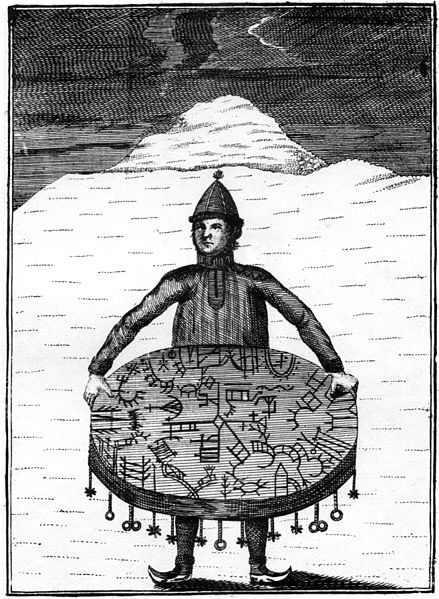A noaidi is a shaman of the Sami people in the Nordic countries, playing a role in Sámi religious practices. Most noaidi practices died out during the 17th century, most likely because they resisted Christianization of the Sámi people and the king's authority. Their actions were referred to in courts as "magic" or "sorcery". Several Sámi shamanistic beliefs and practices are similar to those of some Siberian cultures.
Sami noaidi with a drum used for runic divination (meavrresgárri). Illustration printed from copperplates by O.H. von Lode, after drawings made by Knud Leem (1767)
Shamanism or samanism is a religious practice that involves a practitioner interacting with the spirit world through altered states of consciousness, such as trance. The goal of this is usually to direct spirits or spiritual energies into the physical world for the purpose of healing, divination, or to aid human beings in some other way.
The earliest known depiction of a Siberian shaman, by the Dutch explorer Nicolaes Witsen, 17th century. Witsen called him a "priest of the Devil" and drew clawed feet for the supposed demonic qualities.
An Altay shaman, Russian Empire, 1908
South Moluccan shaman in an exorcism ritual involving children, Buru, Indonesia (1920)
A shaman of the Itneg people in the Philippines renewing an offering to the spirit (anito) of a warrior's shield (kalasag) (1922)





